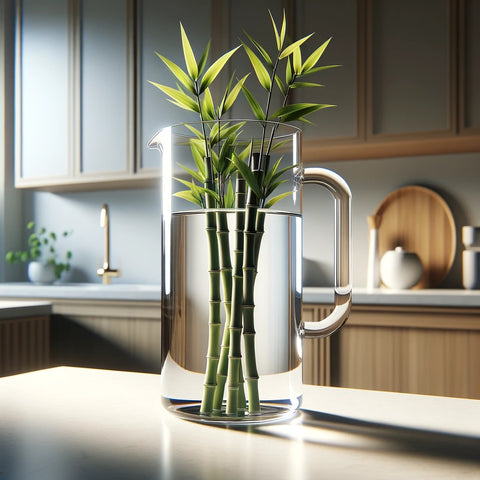Bamboo, in the world of sustainable resources, has carved out a unique and significant niche. This remarkable plant goes beyond just being an eco-friendly alternative; it’s a powerhouse in the green revolution with some astonishing features.
Bamboo’s Secret Weapon: The Rhizome-Dependent System
What sets bamboo apart in the plant kingdom is its rhizome-dependent system. This underground network of roots allows bamboo to spread and regenerate swiftly. Imagine a network of subways connecting a city – that’s how bamboo’s rhizomes work, creating a fast, interconnected system that enables rapid growth and resilience.
Rapid Growth and Remarkable Renewable Nature
Bamboo’s growth rate is nothing short of phenomenal. It’s capable of growing up to 36 inches in just 24 hours. This extraordinary speed isn’t just a quirk of nature; it’s a cornerstone of its eco-friendliness. Unlike traditional hardwoods that take decades to mature, bamboo can be harvested in as little as three to five years, making it a highly renewable resource.
Strength with a Side of Sustainability
Bamboo is not just fast-growing; it’s also incredibly strong. Its tensile strength rivals that of steel, and it surpasses many hardwoods in durability. However, bamboo isn’t invincible. It requires proper treatment to resist moisture and insects, akin to maintaining a sturdy ship for long voyages.
Beyond the Ordinary: Bamboo’s Innovative Applications
From flooring to fabrics, bamboo’s versatility shines. Its fibers are being transformed into soft, breathable textiles, offering an eco-friendly alternative to traditional materials. But the innovation doesn’t stop there – bamboo is also used in unique products like biodegradable diapers and even bicycles, demonstrating its adaptability and strength.
Bamboo and the Environment: A Breath of Fresh Air
One of bamboo’s most incredible environmental contributions is its ability to improve air quality. Bamboo can release 35% more oxygen than equivalent stands of trees. This makes bamboo not just a symbol of sustainability, but a functional contributor to a healthier planet, much like a natural air purifier on a grand scale.
Growing Bamboo: A Sustainable Practice
Cultivating bamboo aligns with eco-friendly practices. It thrives naturally without pesticides or fertilizers and requires minimal intervention. This ease of cultivation enhances its appeal as a sustainable crop.
Bamboo in Nutrition and Health
While bamboo shoots are nutritious, other parts of the plant may not be suitable for consumption. It’s a reminder that while bamboo is versatile, it’s also complex – much like many natural resources that offer both benefits and limitations.
Comparing Bamboo with Other Eco-Friendly Woods
In the realm of sustainable woods, bamboo stands out for its rapid renewability and versatility. While other woods like teak and cedar have their eco-merits, they fall short of bamboo’s growth efficiency and environmental benefits.
Bamboo’s unique properties, from its rhizome-dependent system to its air-purifying capabilities, make it more than just an eco-friendly material. It’s a vital player in our journey towards sustainability, redefining what it means to be green and resourceful. Bamboo isn’t just a part of the eco-friendly conversation; it’s leading it, one sustainable step at a time.
Mix Smarter!


